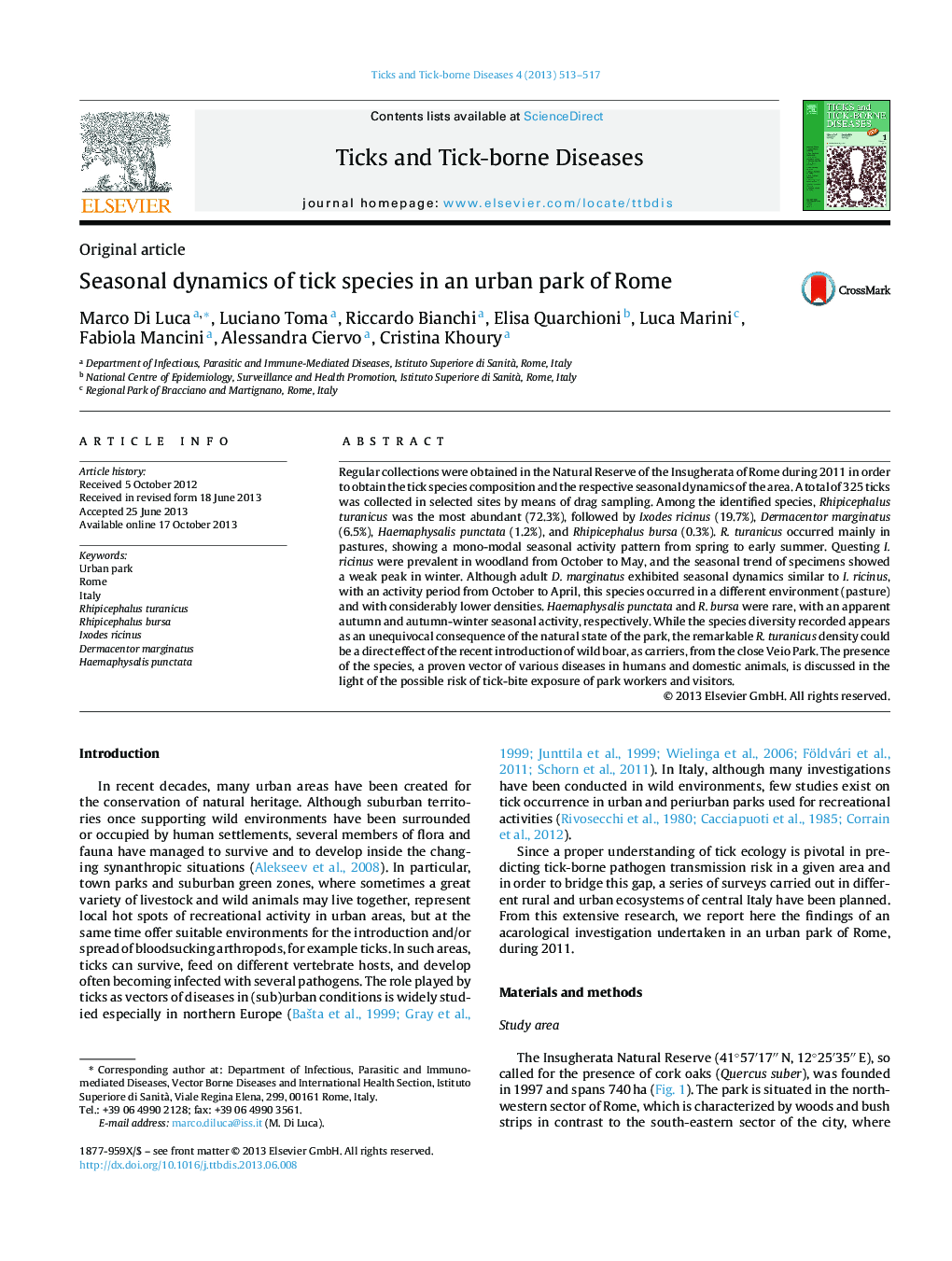| Article ID | Journal | Published Year | Pages | File Type |
|---|---|---|---|---|
| 2474143 | Ticks and Tick-borne Diseases | 2013 | 5 Pages |
Regular collections were obtained in the Natural Reserve of the Insugherata of Rome during 2011 in order to obtain the tick species composition and the respective seasonal dynamics of the area. A total of 325 ticks was collected in selected sites by means of drag sampling. Among the identified species, Rhipicephalus turanicus was the most abundant (72.3%), followed by Ixodes ricinus (19.7%), Dermacentor marginatus (6.5%), Haemaphysalis punctata (1.2%), and Rhipicephalus bursa (0.3%). R. turanicus occurred mainly in pastures, showing a mono-modal seasonal activity pattern from spring to early summer. Questing I. ricinus were prevalent in woodland from October to May, and the seasonal trend of specimens showed a weak peak in winter. Although adult D. marginatus exhibited seasonal dynamics similar to I. ricinus, with an activity period from October to April, this species occurred in a different environment (pasture) and with considerably lower densities. Haemaphysalis punctata and R. bursa were rare, with an apparent autumn and autumn-winter seasonal activity, respectively. While the species diversity recorded appears as an unequivocal consequence of the natural state of the park, the remarkable R. turanicus density could be a direct effect of the recent introduction of wild boar, as carriers, from the close Veio Park. The presence of the species, a proven vector of various diseases in humans and domestic animals, is discussed in the light of the possible risk of tick-bite exposure of park workers and visitors.
